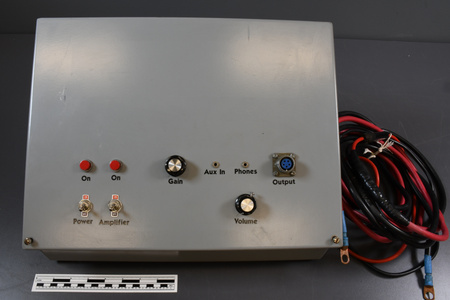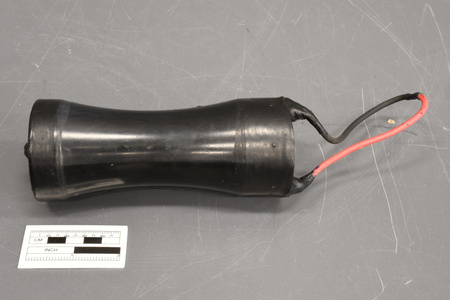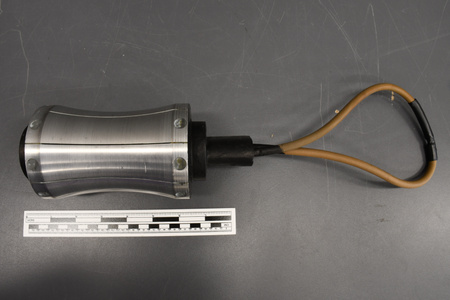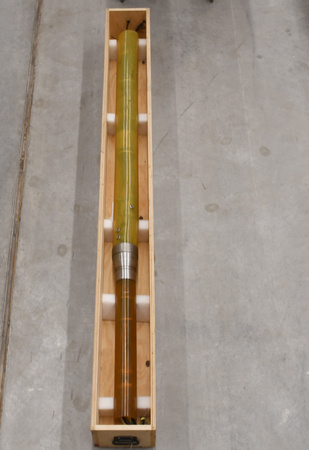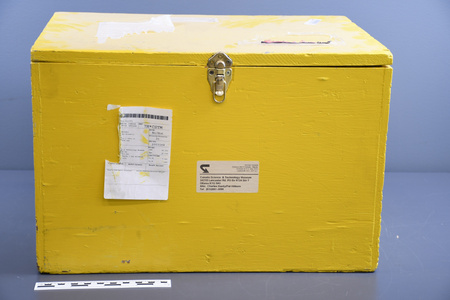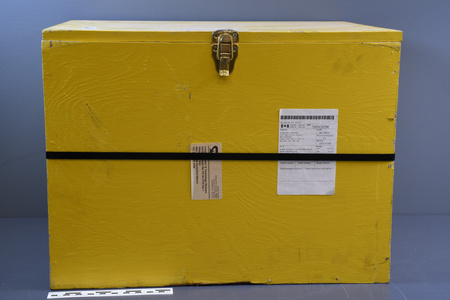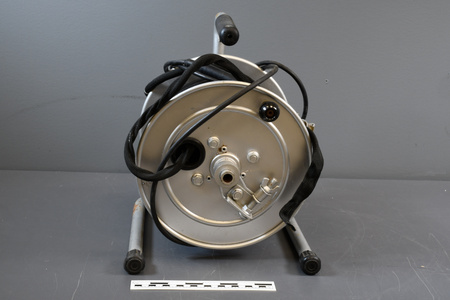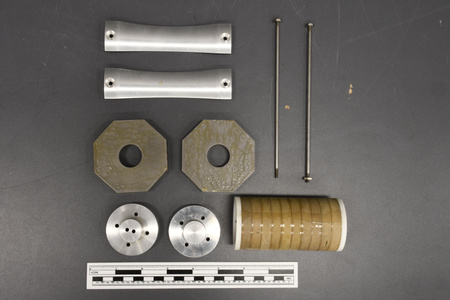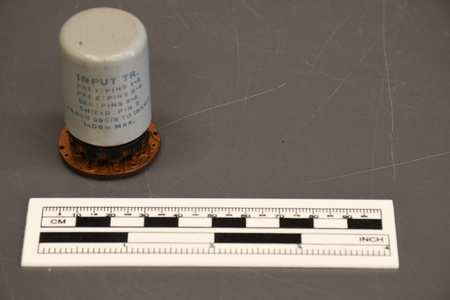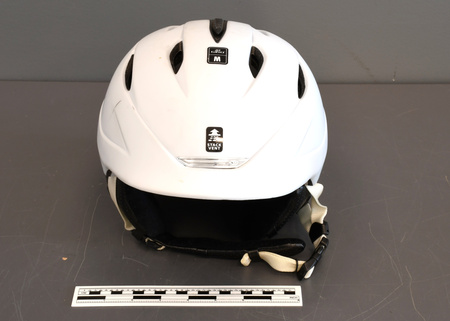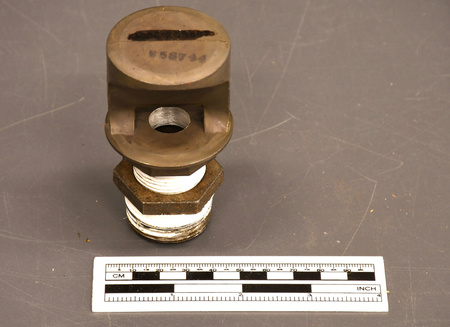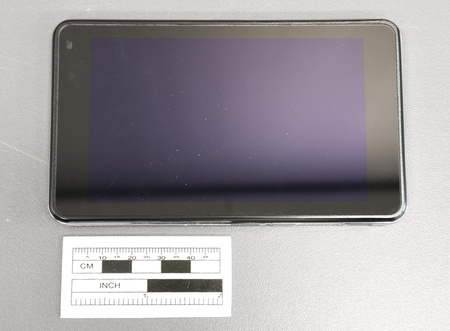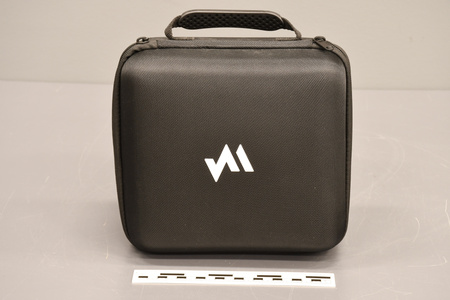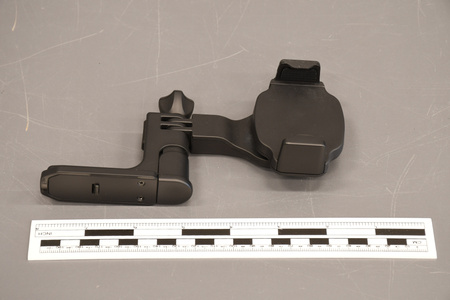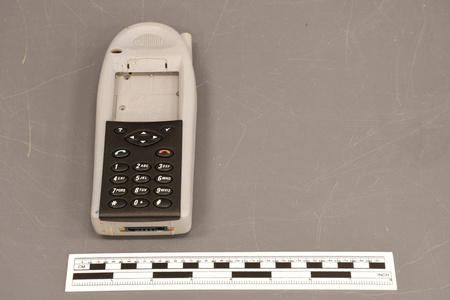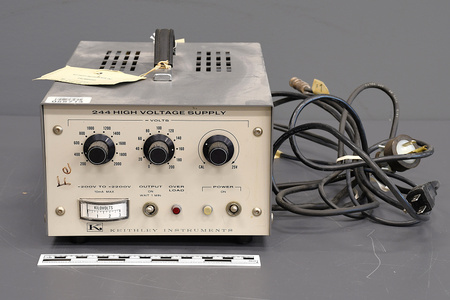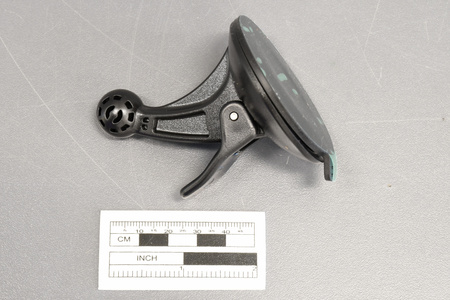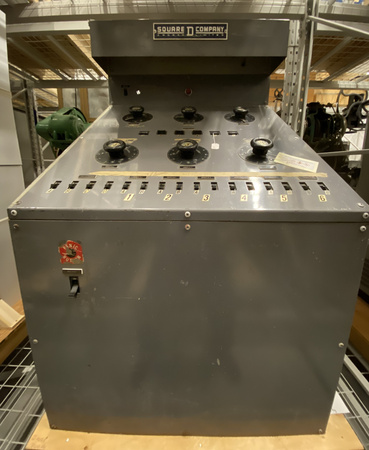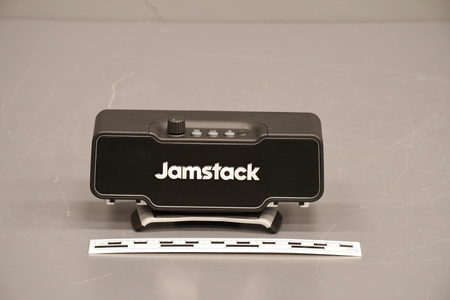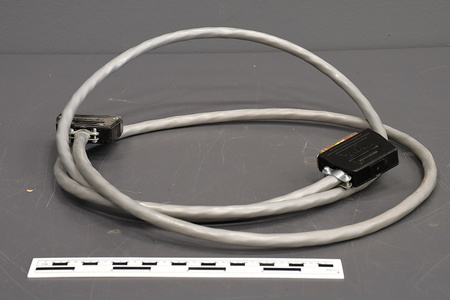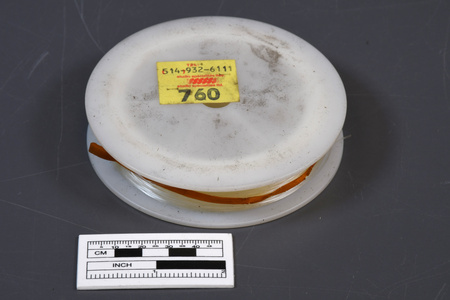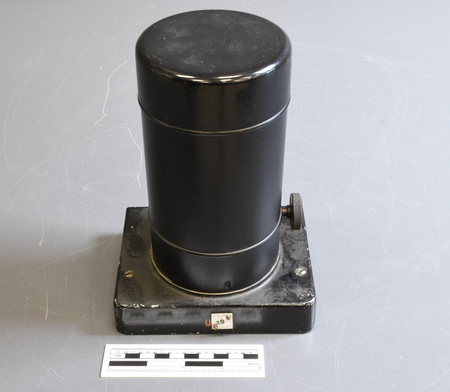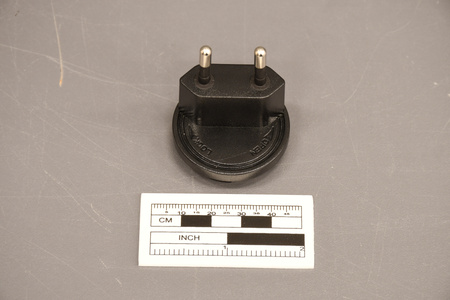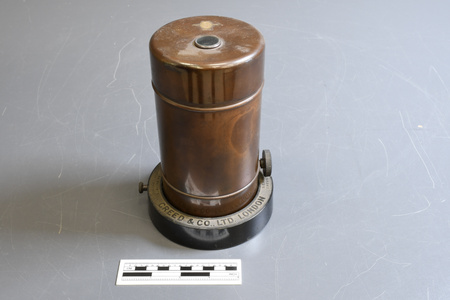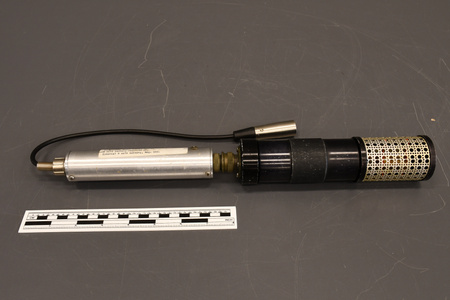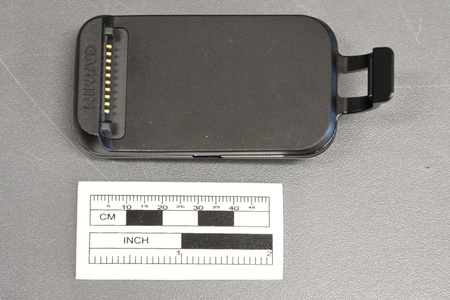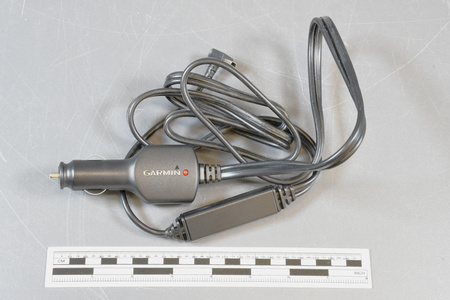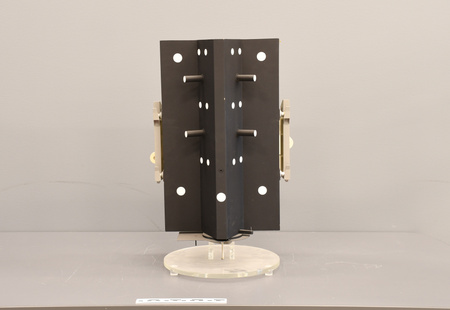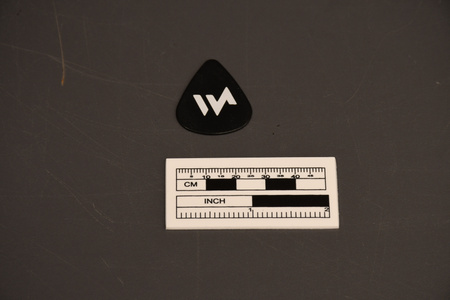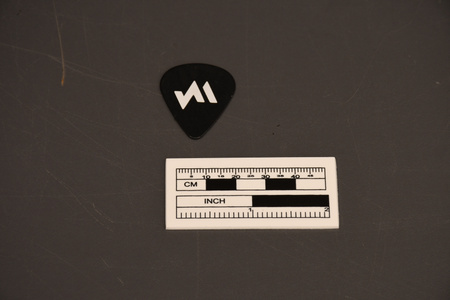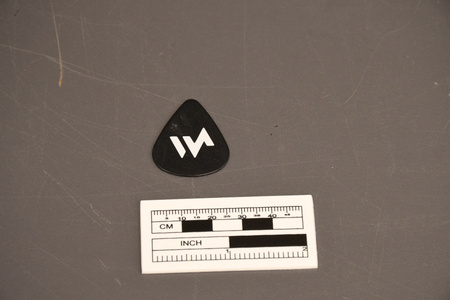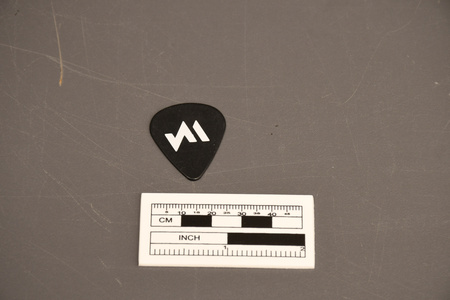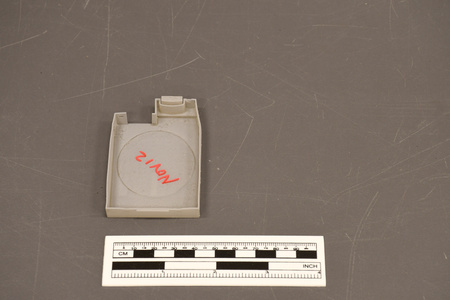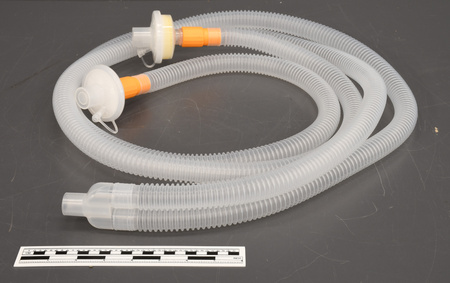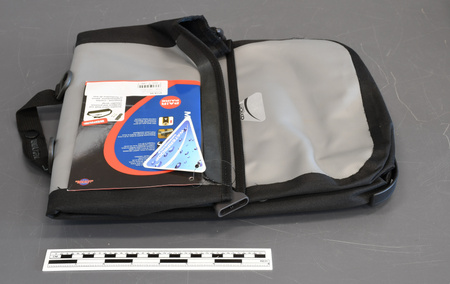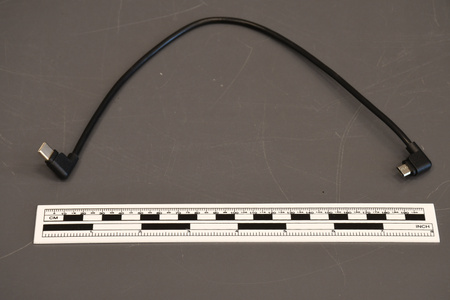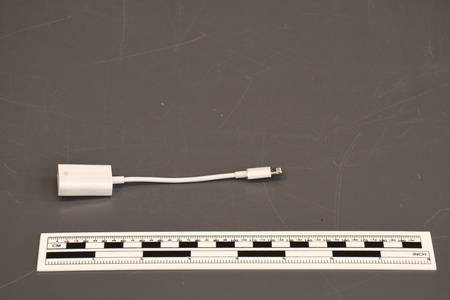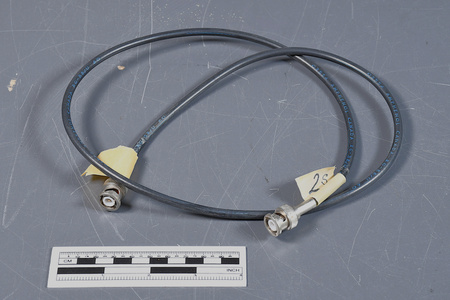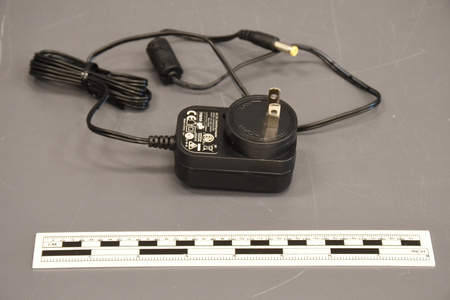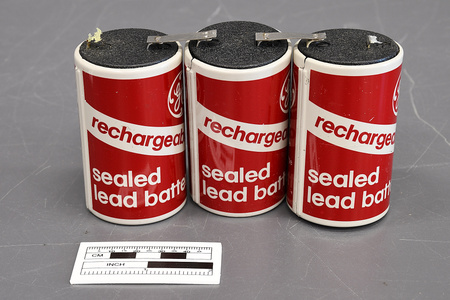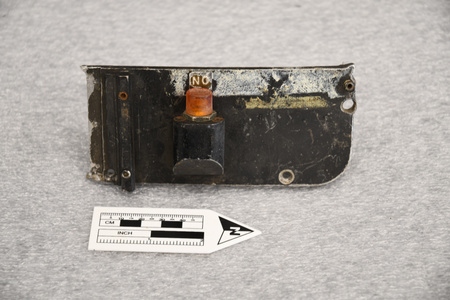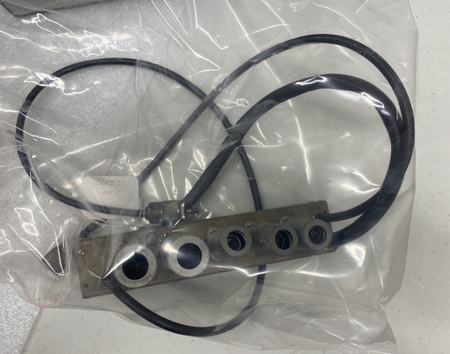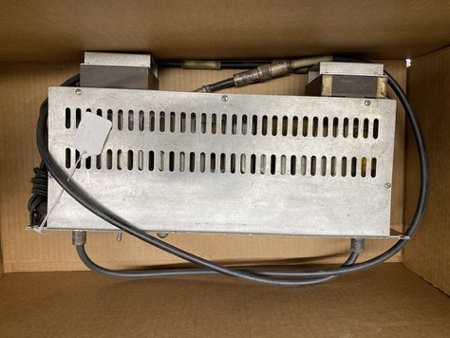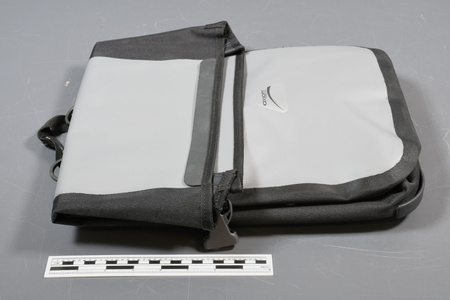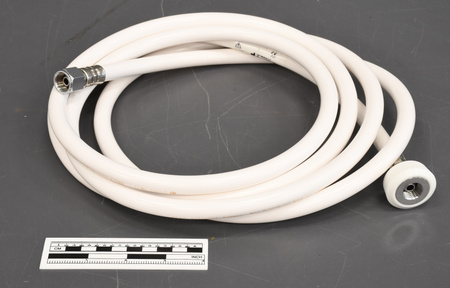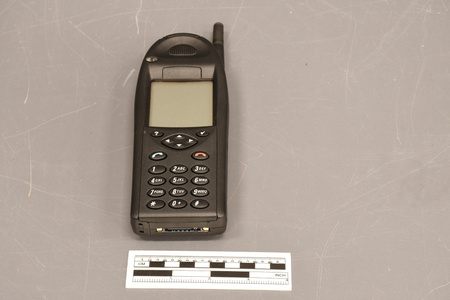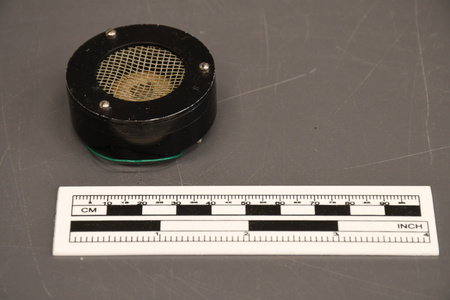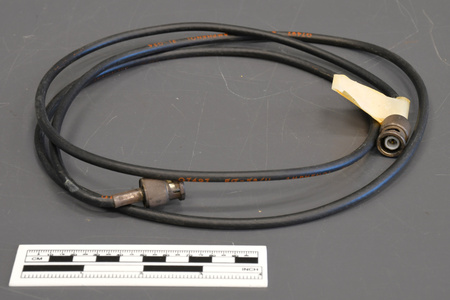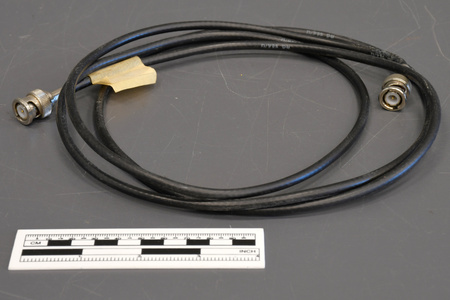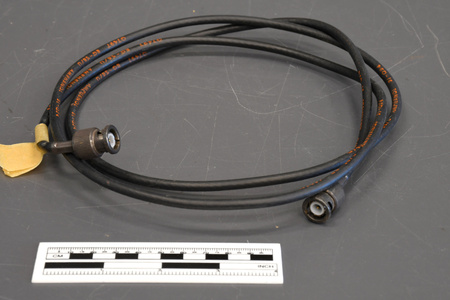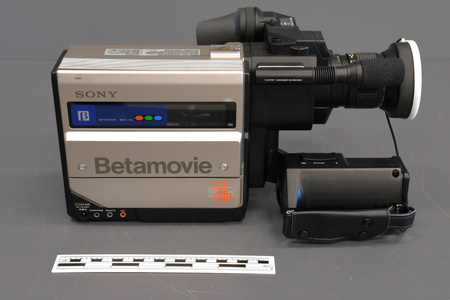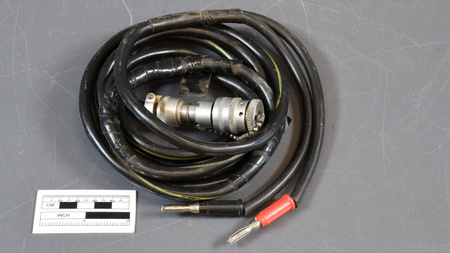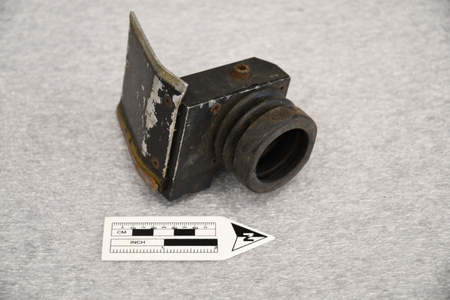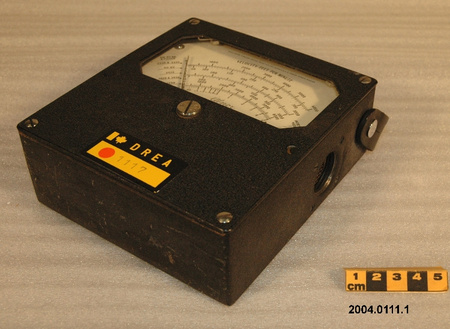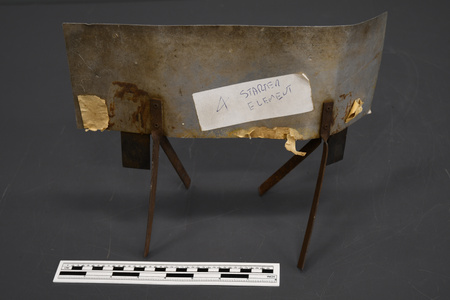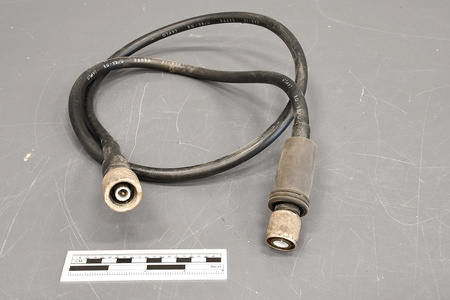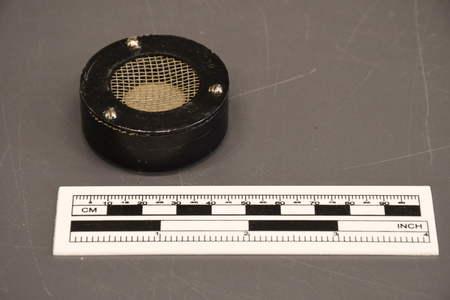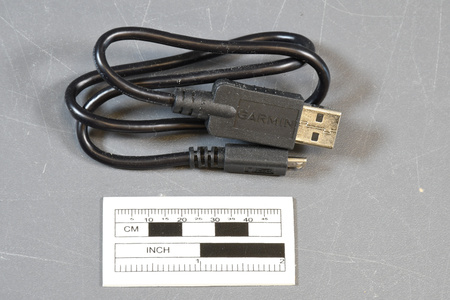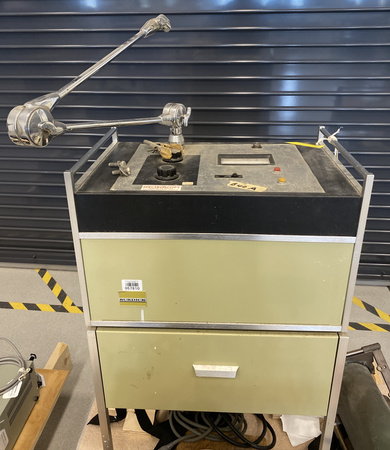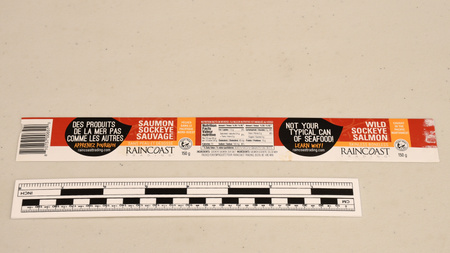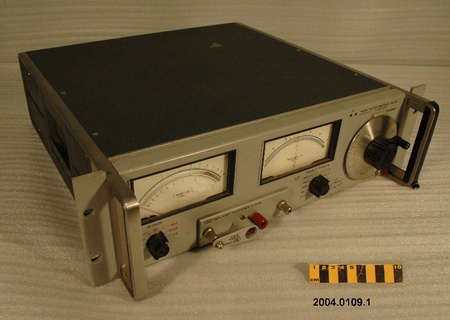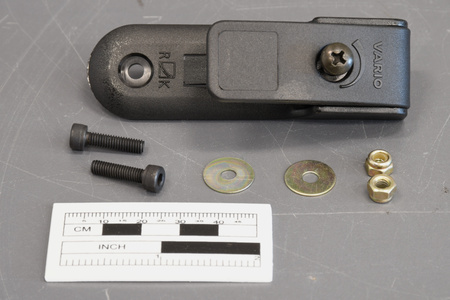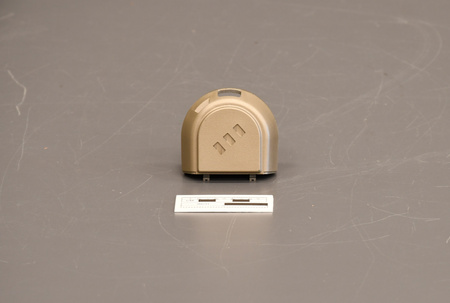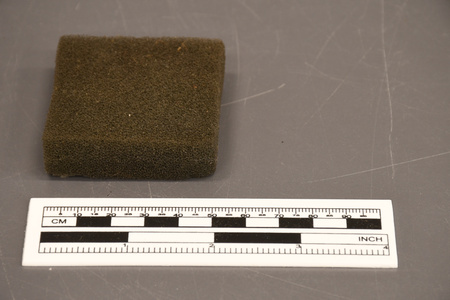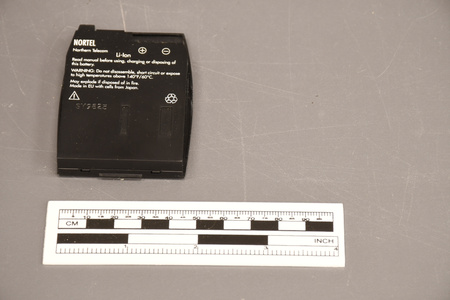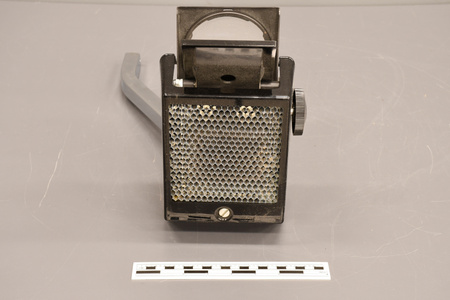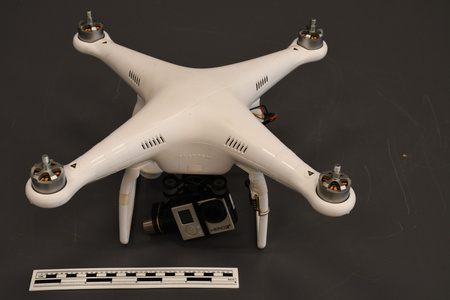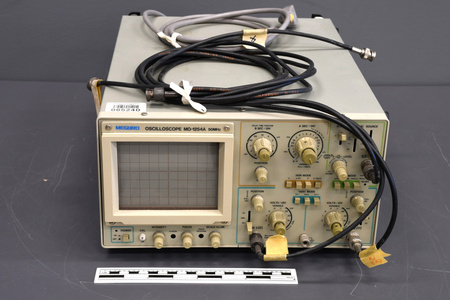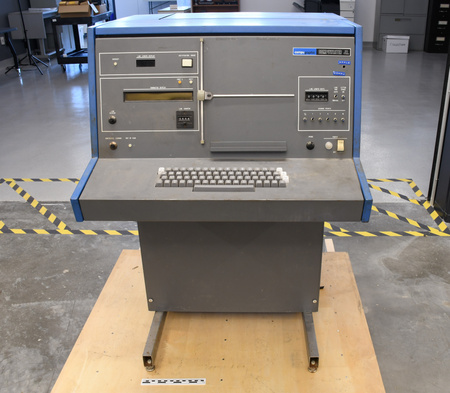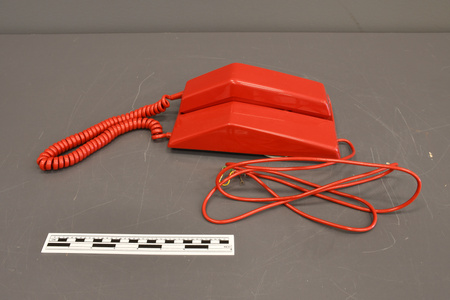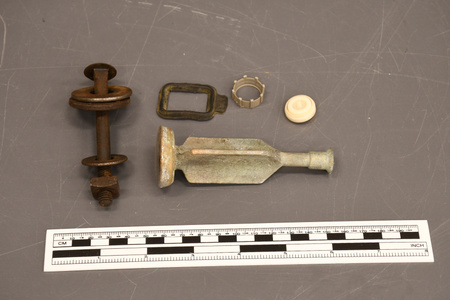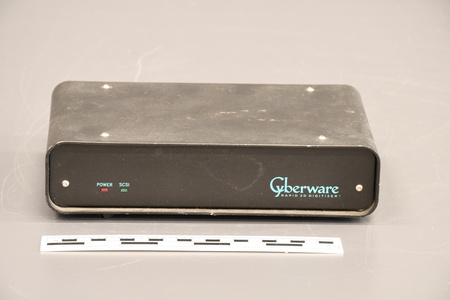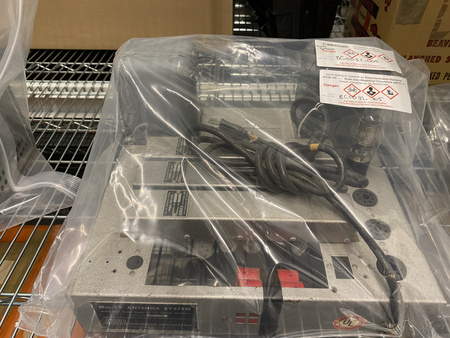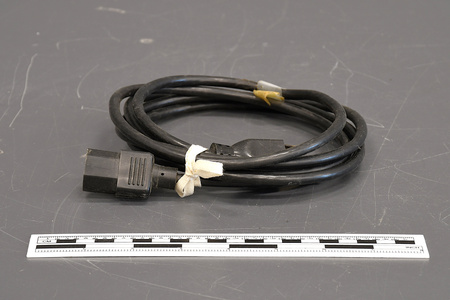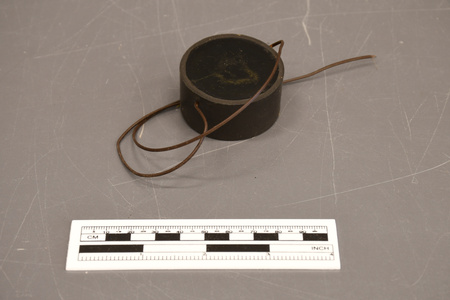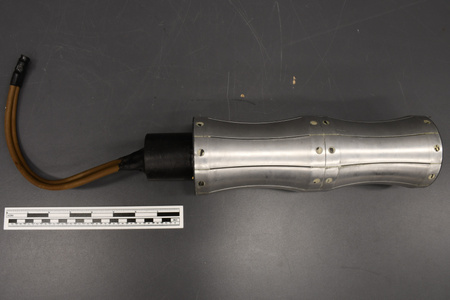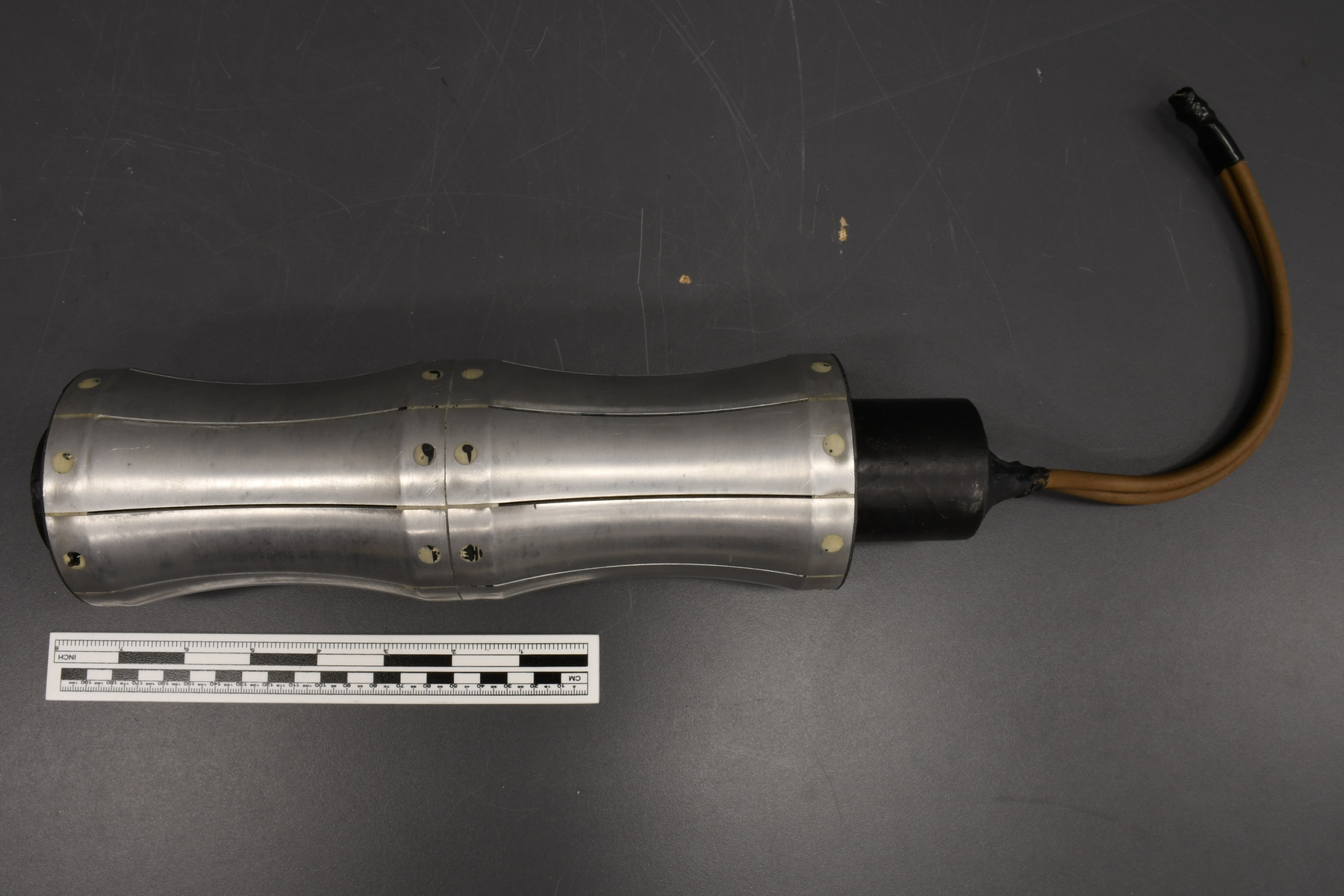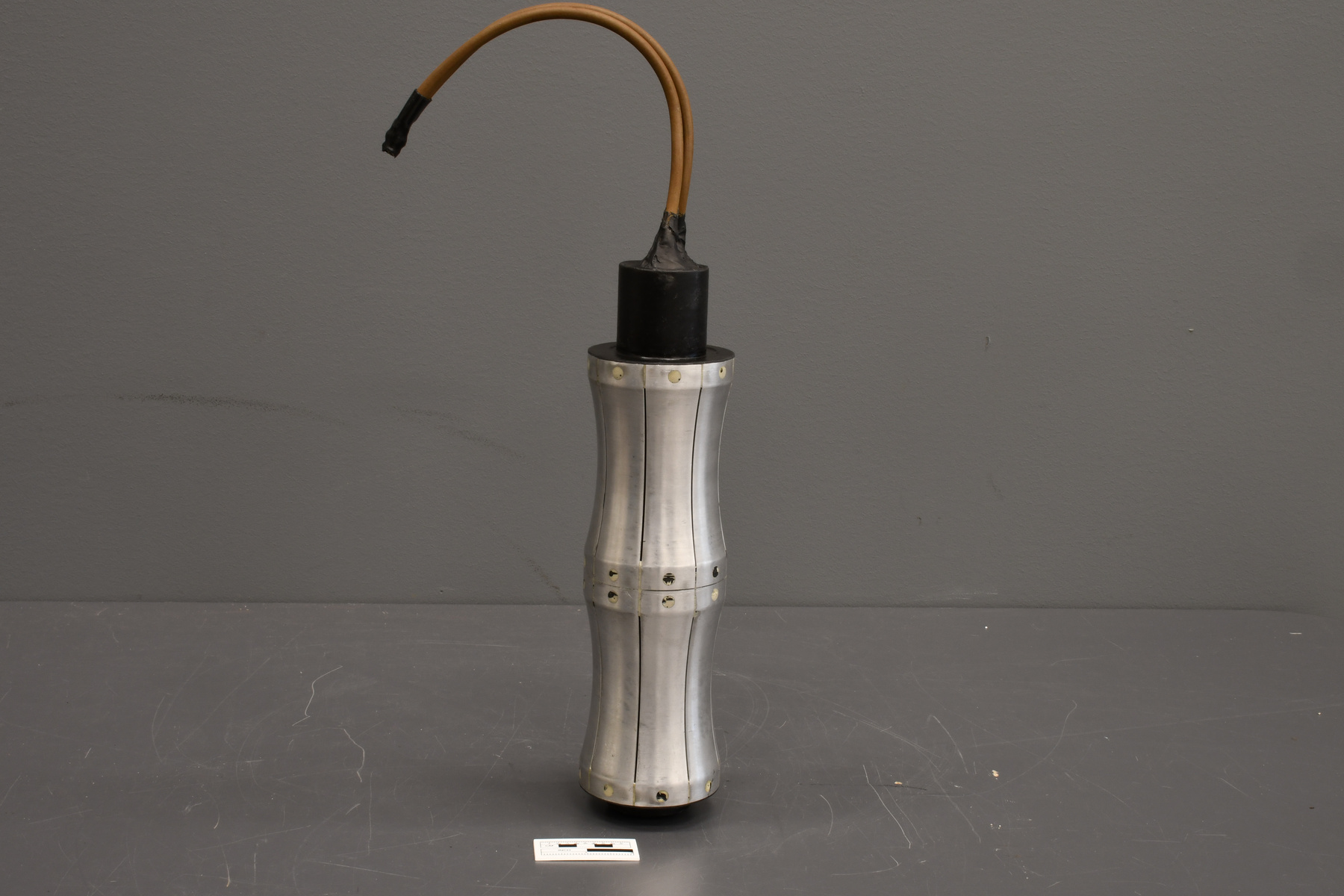Transducer
Use this image
Can I reuse this image without permission? Yes
Object images on the Ingenium Collection’s portal have the following Creative Commons license:
Copyright Ingenium / CC BY-NC-ND (Attribution-NonCommercial 4.0 International (CC BY-NC 4.0)
ATTRIBUTE THIS IMAGE
Ingenium,
2003.1159.001
Permalink:
Ingenium is releasing this image under the Creative Commons licensing framework, and encourages downloading and reuse for non-commercial purposes. Please acknowledge Ingenium and cite the artifact number.
DOWNLOAD IMAGEPURCHASE THIS IMAGE
This image is free for non-commercial use.
For commercial use, please consult our Reproduction Fees and contact us to purchase the image.
- OBJECT TYPE
- Barrel-stave Flextensional/underwater
- DATE
- 1989–1995
- ARTIFACT NUMBER
- 2003.1159.001
- MANUFACTURER
- DEFENCE RESEARCH AND DEVELOPMENT CANADA (DRDC) - ATLANTIC
- MODEL
- Class III
- LOCATION
- Dartmouth, Nova Scotia, Canada
More Information
General Information
- Serial #
- 30X27-6
- Part Number
- 1
- Total Parts
- 1
- AKA
- N/A
- Patents
- N/A
- General Description
- An object comprised of metal and synthetic elements/Un objet fait avec des éléments en métal et synthétique.
Dimensions
Note: These reflect the general size for storage and are not necessarily representative of the object's true dimensions.
- Length
- 9.0 cm
- Width
- 10.0 cm
- Height
- 53.0 cm
- Thickness
- N/A
- Weight
- N/A
- Diameter
- N/A
- Volume
- N/A
Lexicon
- Group
- Communications
- Category
- Sound
- Sub-Category
- N/A
Manufacturer
- AKA
- Unknown
- Country
- Canada
- State/Province
- Nova Scotia
- City
- Dartmouth
Context
- Country
- Canada
- State/Province
- Nova Scotia
- Period
- Unknown
- Canada
-
The sonar transducer is a Canadian technology that originated in the 1980s at the Atlantic division of DRDC (Defence Research and Development Canada) and continues to influence several R&D programs for the Canadian Navy today. The sonar transducers were patented in 1991. Barrel-stave transducers have played a role in at least 26 DRDC Atlantic sea trials and nine joint trials with the Canadian Navy and Dalhousie University in Halifax. These compact devices were incorporated into low frequency active towed arrays and submarine communication buoys, and have also been deployed under the ice in Canada’s north to support the development of rapidly deployable surveillance systems. Le transducteur sonar est une technologie canadienne qui date des années 1980. Il était conçu par DRDC Atlantique (une division de Defence Research and Development Canada) et même aujourd'hui il continue d'influencer plusieurs programmes au R&D pour la Marine canadienne. DRDC a testé les prototypes des transducteurs sonars et ils ont été breveté en 1991. Les transducteurs de douves ont joué un rôle clés en pas moins de 26 essais en mer de DRDC Atlantique et en neuf procès conjoint avec la Marine canadienne et l'université Dalhousie à Halifax. C'est dispositif compact était incorporé à des réseaux remorqués à basse fréquence et des bouées de communication à sous-marin. Ils ont aussi été déployée sous la glace au nord du Canada pour appuyer le développement des systèmes de surveillance. - Function
-
Sonar transducers are used to both receive and transmit acoustic energy. These objects can be used to detect objects underwater as well as pinpoint their location. Les transducteurs sonores sont utilisés pour transmettre et recevoir de l’énergie acoustique pour la détection et la localisation des objets sous l’eau. - Technical
-
The class III transducer is the smallest and lightest BATS (the Broadband Acoustic Transmission System) component. It is easily handled by one person and can be quickly deployed and retrieved. The transducer has a 1-14kHz operating frequency band, it is accessed by the audio components in the control box for acoustic output. BATS was used in vocal mimicry research to test animals’ ability to imitate a sound. The development of the BATS provided researchers from the Whitehead Laboratory at Dalhousie University with an ideal tool to conduct playback experiments for studying cetaceans in the wild. Le transducteur Classe III est la composante la plus petite et légère de BATS (Broadband Acoustic Transmission System). Il est facilement manipulé par une seule personne et ils peuvent être déployés et récupéré. Le transducteur a une bande de fréquence d'opération entre 1-14 hertz et a l'habilité d'être accédé par les composantes audios dans la boîte de commande pour une sortie acoustique.Le système de transmission acoustique à large bande qui est le plus attirable pour tester des expériences à la mer. Le transducteur BATS était utilisé pour les recherches de mimétisme vocal pour tester les animaux de la mer sur leurs habilités d'imiter des sons. - Area Notes
-
Unknown
Details
- Markings
- On the circumference of the black synthetic head/Sur la circonférence de la tête synthétique: "30X27-6".
- Missing
- None apparent/L'objet a toutes ces pièces.
- Finish
- An artifact with a silver metal body that flares out three times at its top, middle and bottom. This gives the body of the artifact an almost double hourglass shape. Small white circles line the circumference of all three of these locations. The base of the artifact is made of a black synthetic material and is circular. Under the base are four button shaped feet. The head of the artifact is also made of the same black synthetic material. One of the markings for a serial number is visible on the outer face of its head. Two brown coloured synthetic cables extend from the head of the artifact and travel in a parallel direction. They are joined together thanks to a black synthetic sleeve. Un artefact avec un corps fait en métal de couleur argent. Le corps est évasé trois fois sur son haut, milieu et bas et ça donne l'impression que l'objet a une forme de deux sabliers un par-dessus l'autre. Des petits cercles blanc voyage sur la circonférence de ces trois endroits. La base de l'artefact est circulaire et il est fait avec du matériel noir synthétique. En dessous de la base il y a quatre petits pieds en forment de bouton. La tête de l'objet est aussi construite avec du matériel synthétique. Une des marques pour un numéro de série est encore visible sur la face de la tête. Deux câbles de couleur brune ressortent de la tête et voyage dans la même direction grâce à une manche synthétique de couleur noire qui les rassemble.
- Decoration
- N/A
CITE THIS OBJECT
If you choose to share our information about this collection object, please cite:
DEFENCE RESEARCH AND DEVELOPMENT CANADA (DRDC) - ATLANTIC, Transducer, between 1989–1995, Artifact no. 2003.1159, Ingenium – Canada’s Museums of Science and Innovation, http://collection.ingenium.ca/en/id/2003.1159.001/
FEEDBACK
Submit a question or comment about this artifact.
More Like This
